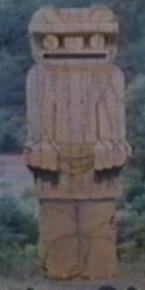Ants have been around for centuries, as have I, but I’ve only gotten around to training them to do my bidding recently. Thanks to hard work, I figured out enough ant pheromones to make them do anything I ask. For fun, I hooked the pheromones up to a keyboard and play my favorite songs, and let the tunes crank out new pheromone combinations to see what the ants will do. Beethoven’s 5th causes ants to dance in a chorus line. The theme to the A-Team will make ants build a traditional Sioux head dress. The classic Beatles song I Want to Hold Your Hand will cause ants to viciously attack Ms Pac-Man arcade machines.
Why Ants Rule the World
By Corey Binns
Special to LiveScience
posted: 08 May 2006
01:30 pm ET
Count on ants to be the first uninvited guests to show up at a picnic. Their party-crashing feats show just how productive and important they are and hint at why they thrive in just about any habitat.
It hasn’t always been an ant’s world. Scientists estimate modern-day ants first evolved about 120 million years ago. But the fossil record suggests that ants at this time weren’t the prevalent insect that they are today. Not until 60 million years later, when some ants adapted to the new world of flowering plants and diversified their diets, did the critters achieve ecological dominance.
Since then they’ve had a successful run of the planet [Image Gallery].
Scientists estimate that about 20,000 ant species crawl the Earth. Taxonomists have classified more than 11,000 species, which account for at least one-third of all insect biomass. The combined heft of ants in the Brazilian Amazon is about four times greater than the combined mass of all of the mammals, birds, reptiles, and amphibians, according to one survey.
Ants of the World
Some 20,000 ant species crawl the world. In this new Image Gallery, see a few of them, from photographer and entomologist Alex Wild at the University of Arizona. Wild has more ant images on his web site.
Everybody knows ants
Ants rule because of the many different ways in which they have adapted to work and eat.
Even their appearance and where they live contrasts from one ant to the next. They can be as tiny as the millimeter-long Oligomyrmex atomus or as big as the aptly named 1.5 inch-long Dinoponera. They come in a range of colors from yellow and red to black. They exist in deserts, rain forests, and swamps—anywhere but the coldest and highest places on Earth.
“Nearly all human languages have a word for ant,” said Philip Ward, an entomologist at the University of California at Davis. “It’s a universal idea. That’s not true for many insects.” Ward published a primer on ants in the March issue of the journal Current Biology.
Range of behaviors
Many ants feed from flowering plants rich in carbohydrates. Some species of carpenter ants construct defensive shelters around the base of plants, to guard against other insects and protect their food supply.
Ants that live in hot, dry habitats have come up with ways to survive long periods of drought by storing food. The popular children’s science kits, Uncle Milton’s Ant Farms, are run by the hardy Pogonomyrmex californicus seed-harvesters that, in the wild, collect huge stockpiles underground. Honey pot ants use their own bodies as storage containers.
Some ants fight for nourishment. Thick antennae on the heads of army ants withstand battles against other ants. Trap-jaw ants, Odontomachus, snap shut their predatory jaws so quickly you can hear it click. Slave-raiding ants steal babies from their neighbors’ nests.
Females do all the work
A family of ants employs queens, gardeners and bandits that have developed specialized tools and skills to get their respective jobs done. Within each species, division of labor varies depending on an individual’s age and sex.
Ants looking after the brood and working inside the nest tend to be younger, while those defending the nest and foraging outside are older. Like all the social species of the insect order Hymenoptera, female ants do all of the work; males just spread their genes around.
“Males are little flying sperm missiles,” said Alex Wild, an entomologist at the University of Arizona.
All ants are social, but some species have developed complex social societies while others remain more primitive. While some ants hunt in parties, the Australian bulldog ant hunts in simple solitude, using its big eyes as opposed to complicated chemical cues.
Mystery Monday
“The colonies are small. There’s not much morphological difference between the queens and the workers,” said Wild. “They have not developed many ‘ant-y’ traits.”
Vampire ants
The ancient Dracula lineage diverged from their ant ancestors before the advent of food-sharing behavior and the ability to regurgitate food. Instead, they poke holes in the abdomen of their larvae to suck on the blood of their sisters.
Unlike other social species like bees and wasps, most ants lack wings and have evolved an arsenal of chemicals to facilitate communication on the ground.
“Being wingless places a constraint on foraging,” Ward said. “They have to collect all of their food on the ground, so that means that ground-based communication is very important.”
Chemicals cues call for dates, alarms, and food locations. When she’s ready to mate, the queen of some species will climb to a high point, stick her rear in the air, and release a pheromone that catches the attention of the guys.
Ants emit alarm pheromones from a gland in their mouth if something disturbs their nest.
At Home
Anthill chambers
“It causes the ants to flip out,” Wild said. “It’s a cue for ants to grab their larvae and run below ground to safety. Defenders of the nest start running around with their mandibles open ready to bite and sting things.”
Communication is the key
Humans can sense these pheromones, too. Bright orange citronella ants, found only in North America, make a strong citrus smell. Not all pheromones smell so sweet, however. Members of the Pheidole group stink of feces when alarmed.
Ants lead the way with chemical cairns, mapping trails and recruiting fellow workers to follow paths to provisions.
“The success of ants is in the way they have figured out how to use their social behavior to maximize a way to bring in resources,” Wild said. “They’ve developed systems of communication so that they can rapidly communicate. That’s why you get massive numbers of ants at your picnic.”



